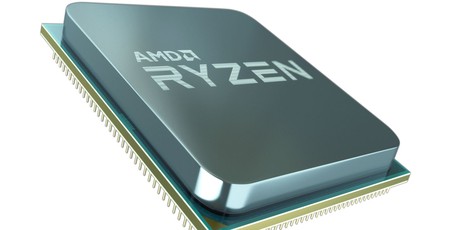
Overclocking
With the Ryzen 5 2400G, we managed an all-core overclock of 4GHz, while the Ryzen 3 2200G came close to this with 3.9GHz across all cores. In both cases, the board's automatic voltage settings were fine for these clocks. This is exactly in line with what is typically the maximum overclock of first-generation Ryzen processors, so those hoping for a little leap with this mildly improved silicon will be disappointed. Nonetheless, it's good that changing the core layout and adding a GPU into the same package hasn't made things any worsOn the GPU front, the chips were both able to run 3,200MHz DDR4, and the cores themselves we managed to push to 1,500MHz in both cases, which is a pretty big overhaul, especially for the lower-end part where the GPU runs at 1,100MHz out of the box. That said, we're not convinced that the BIOS we had was applying that overclock correctly. We're looking into this and will update the article with new information if and when we get it; it's possible the improvements you see in the charts are only due to the memory speed increase. Update 13/02/2018: We have confirmed that even in the latest BIOS on our Gigabyte board, the GPU overclock does not apply properly, so the improvements you see in the graphs are solely from the memory speed increase.
Performance Analysis
We've pitched these APUs against the obvious Intel counterparts, which are similarly priced. We don't have a full set of data for the outgoing Ryzen chips that these new ones replace, but given that – going by the specs – you're getting the same or greater performance on the CPU side plus an onboard GPU for the same price, there's little doubt that this launch confines the Ryzen 5 1400 and Ryzen 3 1200 to irrelevance.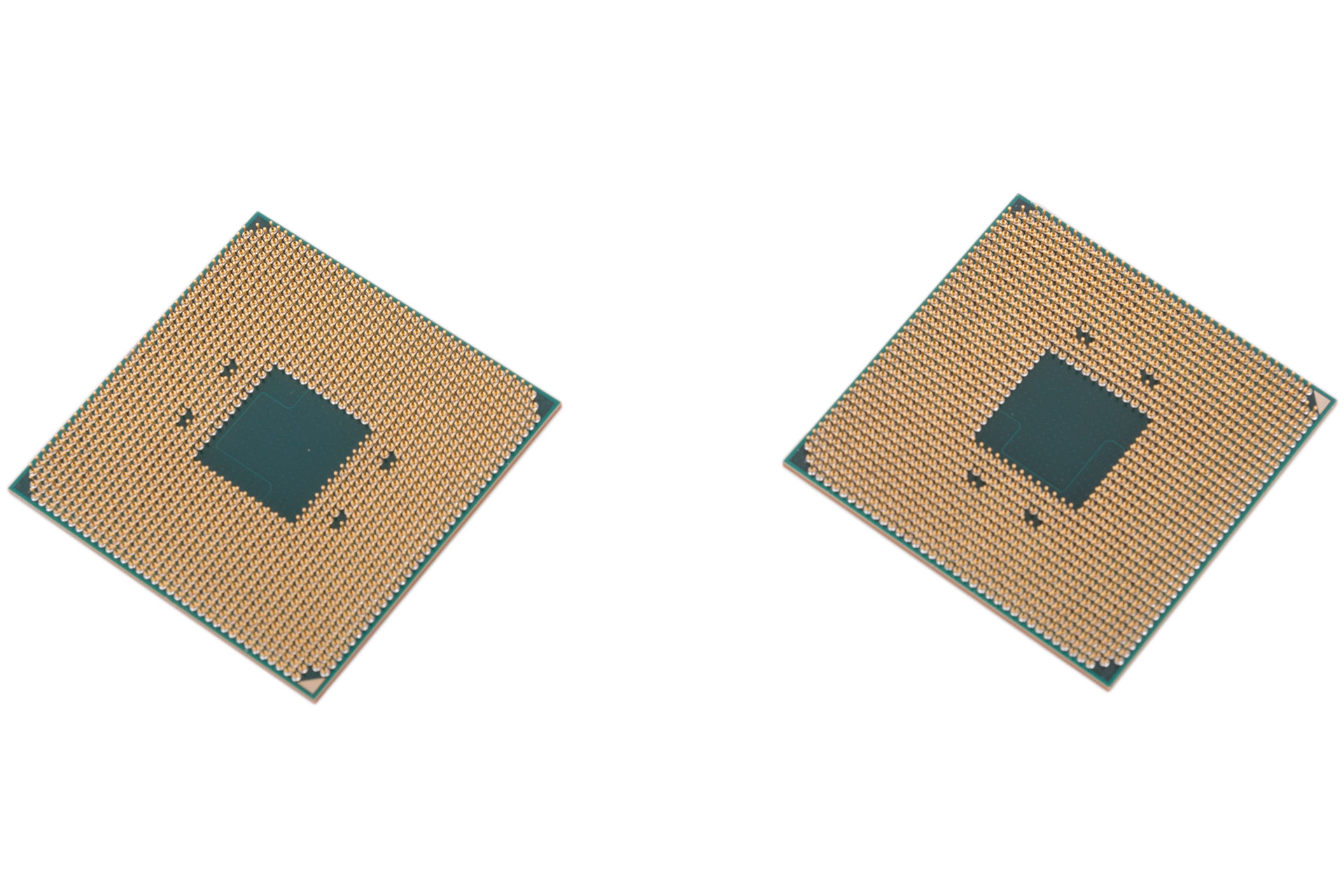
Having eight threads versus Intel's four really gives the Ryzen 5 2400G a leg up in the CPU-limited benchmarks that aren't artificially limited to a single thread. The only exception is Terragen 4, which has long favoured Intel's cores and where the Core i3-8350K is nearly 10 percent faster.
The two lower chips, however, are matched on core and thread count. Core-for-core, Intel is still faster, as evidenced by the Cinebench and CPU-Z single-threaded tests, where the Core i3-8100 is faster than the Ryzen 5 chip here. That means it's the Core i3 that wins most of the battles against the Ryzen 3 part, but PCMark 10's Photo Editing is the exception in this case, albeit only just.
When it comes to onboard graphics, there's simply no contest. Intel's HD Graphics 630 solution is utterly eclipsed by the AMD Radeon RX Vega cores both in gaming and in general-purpose compute tasks that can leverage GPU power (see PCMark 10 with OpenCL enabled). In Fire Strike, for example, the Ryzen 5 2400G is 2.5 times as fast as the Intel Core i3-8350K, hitting a score that's nipping at the heels of what you could expect with an AMD RX 550 or Nvidia GT 1030. Both cards will be better than the Ryzen 3 part, but you'd expect that given that they cost nearly as much as the APU by themselves.
Frame rates in games reflect this large chasm in GPU performance as well. It's fair to say that our two test titles, Deus Ex: Mankind Divided and Middle-Earth: Shadow of War, are not the intended games for onboard graphics, but AMD does reference 1080p gameplay at low settings being possible with these chips. Deus Ex proves that won't always be the case, but it is an especially demanding title, and average frame rates of around 60fps in Middle-Earth make a compelling case for AMD's latest capabilities in onboard graphics. It's no stretch of the imagination to see that popular, easier-to-run esports titles will run at such settings, and the experience will be clearly superior to what you'd get with Intel.
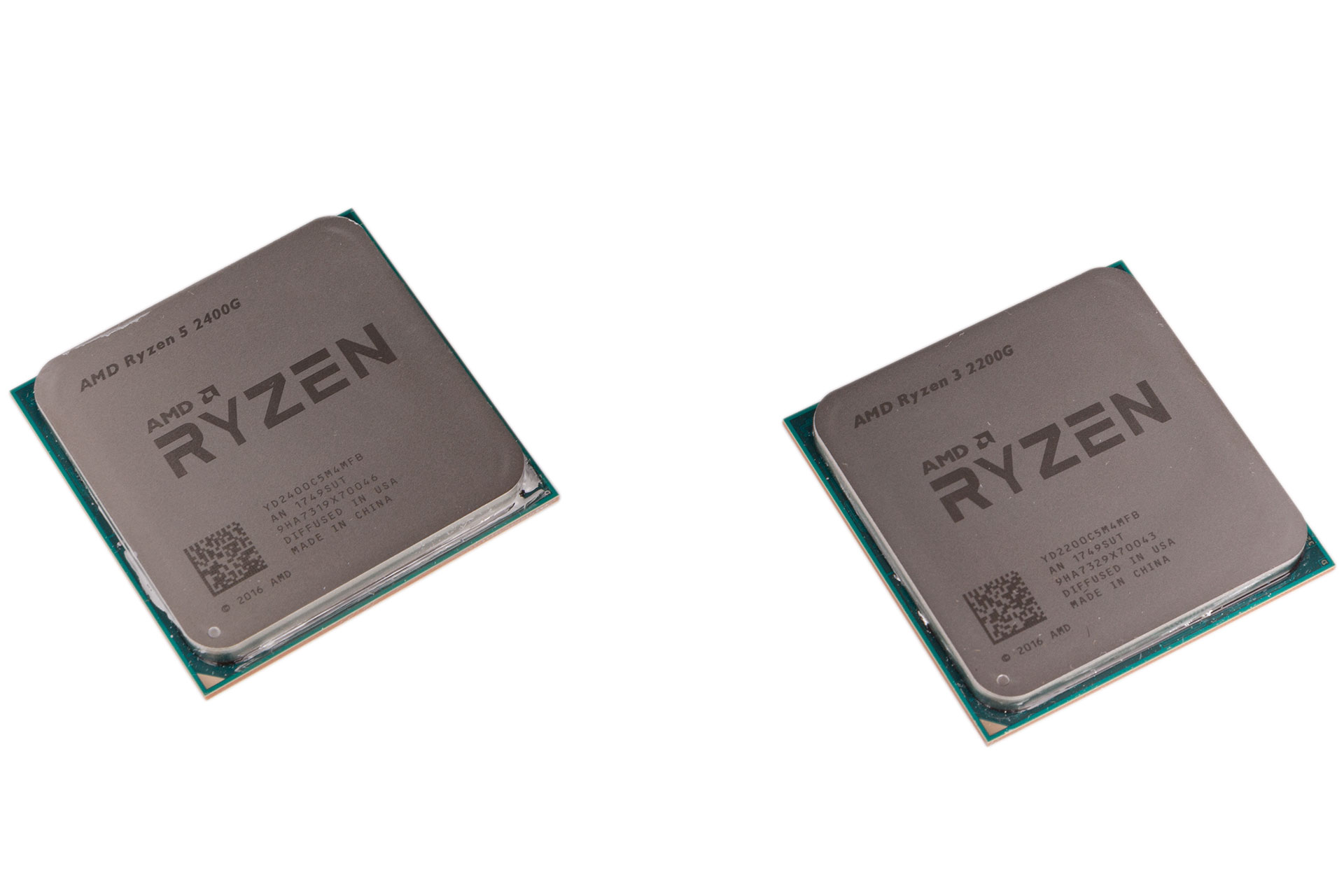
When it comes to feeding a discrete GPU, Intel retains the throne. The Ryzen 3 2200G seems particularly lacking here, and VRMark really favours Intel, with the Core i3 8100 again proving more potent in this test than the Ryzen 5 2400G. There are clear differences in both test games as well, with Middle-Earth also showing signs of stuttering when the AMD chips are used. The differences will be felt less if you use a lower power card, but this is still clearly Intel's turf.
Power consumption for all chips is very low at idle (note that Intel chips were tested on an ATX board while AMD ones were fitted in a mini-ITX one). Looking at the power draw in GPU- and CPU-limited tasks, it appears Intel can divert more power to the CPU, while AMD's GPU is easily the more power hungry, but not in a way that's inefficient given the performance we see.
Overclocking allows AMD's 4C4T Ryzen 3 part to catch up to and even surpass the non-overclockable Core i3 part in Cinebench and CPU-Z – it being unlocked is definitely an advantage against Intel. As for the 4C8T Ryzen 5 part, it will depend on the workload. Intel does have more headroom (the Core i3-8350K is comfortable at 5GHz), but having double the threads can still count for a lot.
In gaming there are some small improvements to be had through overclocking. Our main advice here, however, would be to use 2,933MHz memory at a minimum, or you'll really be hampering the performance.
Platform Stability
This is a section that we don't normally write but which we unfortunately felt obliged to. The performance figures you see and the analysis they inspire were not obtained without considerable difficulty. This is not nitpicking either; a few glitches on new hardware, especially before launch where drivers might not be fully validated, comes with the territory. In this instance, however, our experience with these new chips has led us to believe that they are not quite ready for launch.
Our AMD test system comprised a motherboard, BIOS, and memory all supplied by AMD, as well as a clean and fully up-to-date install of the latest Windows 10 build on a brand new SSD – best case scenario, in other words. In spite of all this, basic tasks like running 3DMark or GPU-Z would cause crashes, and even when we found workarounds, we experienced frequent crashes during benchmarking. Furthermore, the supplied version of Ryzen Master simply didn't work at all, and all overclocking had to be done in the BIOS.
When Ryzen first launched, there were problems with memory compatibility and certain motherboards, but this was a brand new platform – such occurrences are nearly impossible to avoid and have been observed on new Intel platforms too. Now, though, we are nearly one year into the AM4 platform, so there's no excuse. Yes, graphics have been added for the first time, but that was always AMD's plan for this platform – it's what the Infinity Fabric is all about, after all. It's a real shame, too, because when it works it by and large works very well.
The problems do seem to be exclusively software-based, so hopefully they are ironed out sooner rather than later. However, we know from speaking to major system integrators that we've not been alone in experiencing numerous problems. System integrators typically have testing and validity checks that systems have to pass before being sent to consumers, so if you're shopping in that market you'll have some reassurances, but at the moment enthusiasts could easily experience frustrating difficulties if self-building.
Conclusion
These new AMD APUs are long overdue. Ryzen successfully reasserted AMD as a strong competitor in the mainstream CPU market, giving customers more cores (or threads at the very least) for less money and forcing Intel to do the same in turn, but every desktop Ryzen CPU has, until now, needed a discrete GPU, which brings with it a host of potential downsides where space, power consumption, and price are concerned (as well as thermals and noise). AMD has been helped by Intel not having any low-end 300-series chipsets, but the fact remains.
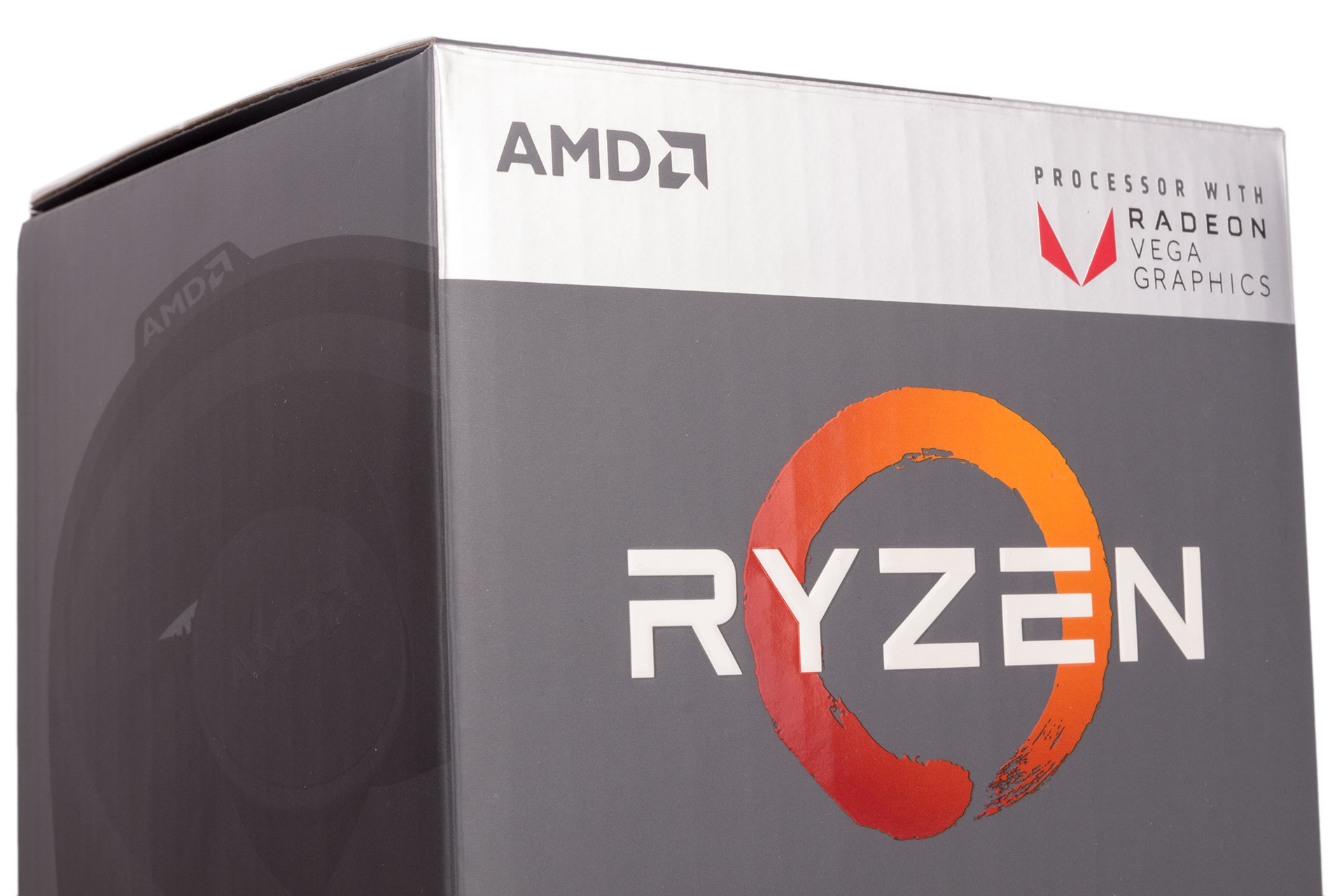
Finally, however, AMD now has an onboard graphics offering for AM4, and it's a bloody good one at that. 1080p 30fps with low settings is a reasonable target for good onboard graphics, we think, and although it is not quite realised, for all but the most demanding titles it either will be or certainly isn't far off. The drawback of AMD's APUs has always been the CPU performance, but the AMD Ryzen Desktop Processor with Radeon Vega Graphics range successfully mitigates that, using Simultaneous Multi-Threading and fully unlocked SKUs to combat Intel's core-for-core lead. Having fewer built-in security vulnerabilities (albeit still unpatched) is also worth mentioning. Vega display hardware also means the APUs have an excellent feature set that's suitable for low-power HTPC builds, for example
Clearly, then, these new Ryzen parts make a great case for themselves, and we can see them being very popular for high-volume system sales and budget builders alike. The Ryzen 3 part undercuts the competing Core i3 on price nicely, while the Ryzen 5 part offers more threads and a far more powerful GPU than the Intel Core i3-8350K (and the Intel Core i5-8400). If you are planning on building with a discrete GPU (or adding one in the near future) or if you need the extra PCIe lanes that Intel has (unlikely at this price, but possible), then Intel is the best choice, but otherwise we'd push you towards the AMD hardware, where the wider availability of low-cost motherboards only compounds their advantages when it comes to your wallet
Or rather, we would do that were it not for our concerns related to the current state of the platform. We have little doubt that AMD is working tirelessly to fix stability issues, and we're interested to see what the experience of the wider tech press has been, but right now at launch we can't recommend that you purchase these APUs. As we said: good ideas undermined by flawed execution. That said, we'd also advise waiting until Intel properly sorts out the vulnerabilities in its hardware before spending your hard-earned. Sadly, neither option is particularly compelling right now.

MSI MPG Velox 100R Chassis Review
October 14 2021 | 15:04

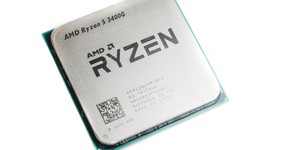
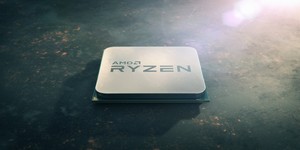
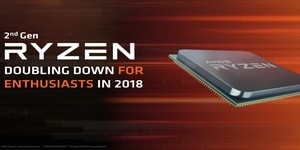





Want to comment? Please log in.